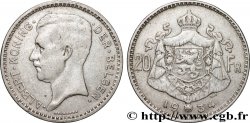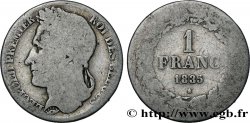E-auction 143-82843 - fwo_378154 - BELGIEN 1 Franc Léopold Ier tête laurée 1835 Bruxelles
Sie müssen angeschlossen sein und von cgb.fr genehmigt werden, um in einer E-Auktion teilzunehmen.Melden Sie sich an, um zu wetten..Die Kontobestätigungen sind innerhalb von 48 Stunden nach Ihrer Anmeldung gemacht.Warten Sie nicht bis die letzten zwei Tage vor dem Abschluss eines Verkaufs, um Ihre Registrierung abzuschließen. Klickend "BIETEN" verpflichten Sie sich vertraglich, diesen Artikel zu kaufen und Sie nehmen ohne Reserve die allgemeinen Verkaufsbedingungen für den e-auctions zu cgb.fr an.
Der Verkauf wird an der Zeit auf der Übersichtsseite angezeigt geschlossen werden. Angebote, die nach der Schließung Zeit empfangen sind, werden nicht gültig.
Bitte beachten Sie, dass die Fristen für die Einreichung Ihres Angebots auf unsere Server können variieren und es kann zur Ablehnung Ihres Angebots entstehen, wenn es in den letzten Sekunden des Verkaufs gesendet wird. Die Angebote sollen mit ganzer Zahl ausgeführt sein, Sie können Kommas oder des Punktes in Ihrem Angebot nicht erfassen. Bei Fragen klicken Sie hier, um einen Blick auf die FAQ E-Auktionen.
KEINE ANSCHAFFUNGSKOSTEN FÜR DIE KÄUFER.
KEINE ANSCHAFFUNGSKOSTEN FÜR DIE KÄUFER.
| Schätzung : | 50 € |
| Preis : | 9 € |
| Höchstgebot : | 10 € |
| Verkaufsende : | 11 Januar 2016 17:42:30 |
| Bieter : | 5 Bieter |
Type : 1 Franc Léopold Ier tête laurée
Datum: 1835
Name der Münzstätte / Stadt : Bruxelles
Prägemenge : 861000
Der Feingehalt beträgt : 900 ‰
Durchmesser : 23 mm
Stempelstellung : 6 h.
Gewicht : 4,62 g.
Rand cannelée
Seltenheitsgrad : R1
N° im Nachschlagewerk :
Vorderseite
Titulatur der Vorderseite LEOPOLD PREMIER - ROI DES BELGES.
Beschreibung Vorderseite Tête de Léopold Ier à gauche, coiffée de la couronne de chêne ; signé BRAEMT. F sur la tranche du cou.
Rückseite
Titulatur der Rückseite 1/ FRANC/ 1835/ *.
Beschreibung Rückseite dans une couronne de chêne.
Kommentare
Ce type a été frappé entre 1833 et 1844, suite à la loi du 5 juin 1832. Il ne fut démonétisé que par la loi du 7 mars 1867. La quantité officiellement refondue pour ce type laisse hors refontes officielles plus de 18% de l'émission. Les monnaies belges étant d'une très grande rareté - et tout particulièrement ce modèle - on peut en déduire plusieurs comportements. Tout d'abord que la refonte privée était combattue avec moins d'énergie en Belgique qu'en France, puisque, à frappe, date et type comparables, les monnaies belges sont beaucoup plus rares que les monnaies françaises. Par ailleurs, que les tensions de prix entre l'argent et l'or, celui-ci devenant relativement moins cher que l'argent, déclencha dans les années 1860, ont vu une recherche systématique des divisionnaires en 900 millièmes de pureté, payées en or, fondues, revendues contre de l'or au prix du métal argent, supérieur à la valeur faciale fondue. Il faut donc imaginer des milliers de caissiers prélevant systématiquement dans la circulation toutes ces monnaies de Léopold Ier pour comprendre leur rareté actuelle..
This type was minted between 1833 and 1844, following the law of June 5, 1832. It was only demonetized by the law of March 7, 1867. The officially remelted quantity for this type leaves more than 18% of the issue outside official remelts. Since Belgian coins are extremely rare - and this model in particular - several behaviors can be deduced. First of all, private remelting was fought with less energy in Belgium than in France, since, with comparable mintage, date and type, Belgian coins are much rarer than French coins. Furthermore, the price tensions between silver and gold, the latter becoming relatively cheaper than silver, triggered in the 1860s, saw a systematic search for divisionaries in 900 thousandths of purity, paid in gold, melted down, resold for gold at the price of silver metal, higher than the melted face value. We must therefore imagine thousands of cashiers systematically removing all these coins of Leopold I from circulation to understand their current rarity.
This type was minted between 1833 and 1844, following the law of June 5, 1832. It was only demonetized by the law of March 7, 1867. The officially remelted quantity for this type leaves more than 18% of the issue outside official remelts. Since Belgian coins are extremely rare - and this model in particular - several behaviors can be deduced. First of all, private remelting was fought with less energy in Belgium than in France, since, with comparable mintage, date and type, Belgian coins are much rarer than French coins. Furthermore, the price tensions between silver and gold, the latter becoming relatively cheaper than silver, triggered in the 1860s, saw a systematic search for divisionaries in 900 thousandths of purity, paid in gold, melted down, resold for gold at the price of silver metal, higher than the melted face value. We must therefore imagine thousands of cashiers systematically removing all these coins of Leopold I from circulation to understand their current rarity.








 Berichten über einen Fehler
Berichten über einen Fehler Die Seite drucken
Die Seite drucken Teilen meiner Auswahl
Teilen meiner Auswahl Stellen Sie eine Frage
Stellen Sie eine Frage Einlieferung/Verkauf
Einlieferung/Verkauf
 Details
Details










